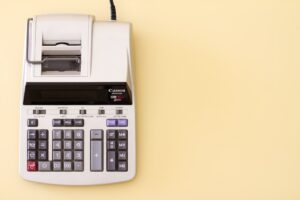Mastering Technical Indicators: A Guide to Knowing When to Enter a Forex Trade
The foreign exchange market, commonly known as forex, is the largest and most liquid market in the world. With trillions of dollars being traded daily, it offers a plethora of opportunities for traders to profit from currency fluctuations. However, trading forex is not as simple as it may seem. It requires a deep understanding of various factors that influence currency movements, including technical indicators.
Technical indicators are mathematical calculations based on historical price and volume data, which are used to analyze and predict future price movements. These indicators help traders make informed decisions about when to enter or exit a forex trade. In this article, we will explore some commonly used technical indicators and their significance in forex trading.
Moving averages: Moving averages are one of the most widely used and basic technical indicators. They help traders identify trends and smooth out price fluctuations over a specified period. A moving average is calculated by adding the closing prices of a currency pair over a set number of periods and dividing the sum by the number of periods. Traders often use two types of moving averages – the simple moving average (SMA) and the exponential moving average (EMA). The SMA gives equal weight to all prices, while the EMA gives more weight to recent prices. When the price of a currency pair crosses above the moving average, it is considered a bullish signal, indicating that it may be a good time to enter a long trade. Conversely, when the price crosses below the moving average, it is considered a bearish signal, suggesting that it may be a good time to enter a short trade.
Relative Strength Index (RSI): The RSI is a momentum oscillator that measures the speed and change of price movements. It ranges from 0 to 100 and is typically used to identify overbought and oversold conditions in a currency pair. When the RSI is above 70, it indicates that the currency pair may be overbought and due for a correction. Conversely, when the RSI is below 30, it indicates that the currency pair may be oversold and due for a rebound. Traders often use these levels as potential entry points for trades. For example, if the RSI is above 70 and starts to decline, it may indicate a bearish reversal and a potential entry point for a short trade.
Moving Average Convergence Divergence (MACD): The MACD is a trend-following momentum indicator that consists of two lines – the MACD line and the signal line. The MACD line is calculated by subtracting the 26-day exponential moving average from the 12-day exponential moving average. The signal line is a 9-day exponential moving average of the MACD line. When the MACD line crosses above the signal line, it generates a bullish signal, indicating that it may be a good time to enter a long trade. On the other hand, when the MACD line crosses below the signal line, it generates a bearish signal, suggesting that it may be a good time to enter a short trade.
Bollinger Bands: Bollinger Bands consist of a middle band, which is a simple moving average, and an upper and lower band, which are standard deviations of the middle band. These bands expand and contract based on market volatility. When the price of a currency pair reaches the upper band, it is considered overbought, and when it reaches the lower band, it is considered oversold. Traders often look for a reversal in price when it reaches these bands, as it may indicate a potential entry point for a trade.
These are just a few examples of the many technical indicators used by forex traders. It is important to note that no single indicator can guarantee the success of a trade. Traders often use a combination of indicators and other factors, such as fundamental analysis and market sentiment, to make informed trading decisions.
In conclusion, mastering technical indicators is crucial for successful forex trading. By understanding and applying these indicators, traders can identify potential entry points for trades and increase their chances of making profitable trades. However, it is important to remember that technical indicators are not foolproof and should be used in conjunction with other analysis tools to make well-informed trading decisions.





